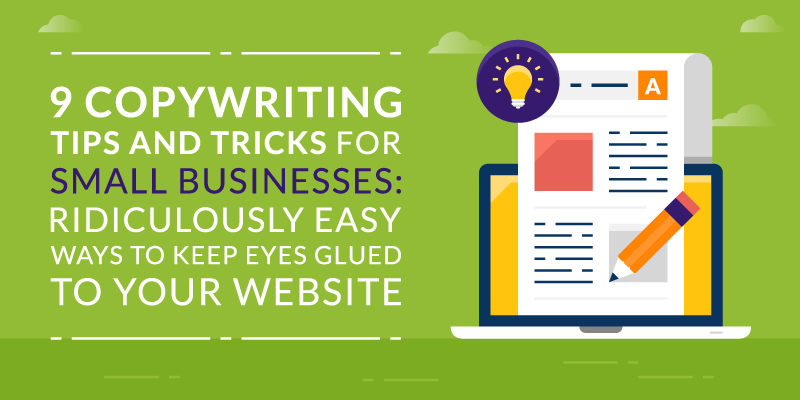
Having great content on your website is quickly becoming one of the most important aspects that needs to be taken care of. It allows small businesses to bring in more customers, get more conversions, and make more money.
Companies who blog get 97% more links to their website and have 434% more indexed pages. So, if having great content is so important, a few copywriting tips to help you get there couldn’t hurt.
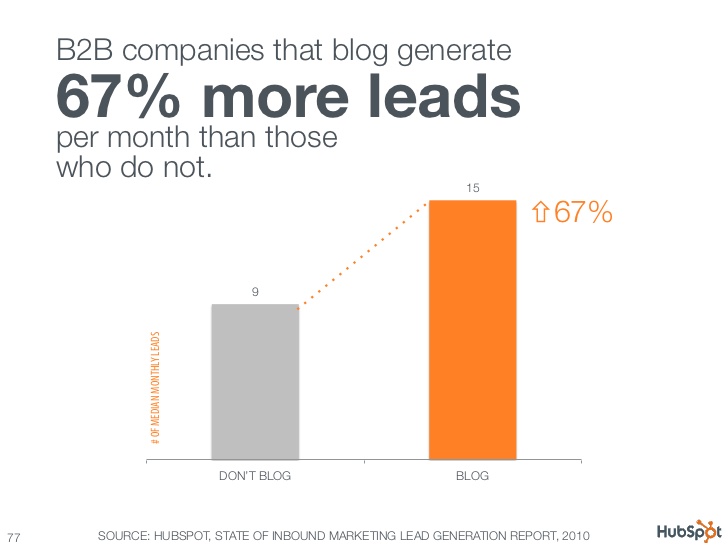
For many business owners, copywriting does not come naturally.
It can be hard work figuring out what to focus on and how to create compelling content. You may not always have the money to hire a freelancer to do the work for you and sometimes you may just want to pen down an article about something you are an expert on.
In any case, a few nifty copywriting tips could be exactly what you need to hone your own skills:
#1 Your Title Is the First Thing Readers See
The importance of a good title simply cannot be ignored. It is what is going to convince potential readers to click on your article so it needs to be absolutely perfect.
The very same way you judge a book or a movie on their title and cover work- your article will be judged too.
There are multiple things you should keep in mind when trying to get the perfect title but here are a few important ones-
Listicles will always be popular
Listicles require minimal effort from the reader. They can skim through your article or read the whole thing depending on what they want and how much time they have.
Think about it- when you look at your to-do list and update it for the day, do you number your tasks or create a paragraph that explains what your plan is?
It has also been noted that millennials, in particular, love listicles. Why? Well, one of the reasons is because nowadays there is an overload of information. You have 1500 friends on Facebook, 12 different work apps to check, and 20 recipes to pick your dinner of the day from.
Your brain (now more than ever before) is craving some semblance of order. So, when it sees a listicle article that neatly displays the information without the problem of being annoying, it gravitates towards it.
A good example of the power of listicle content is Buzzfeed– half their businesses IS all about listicle articles.
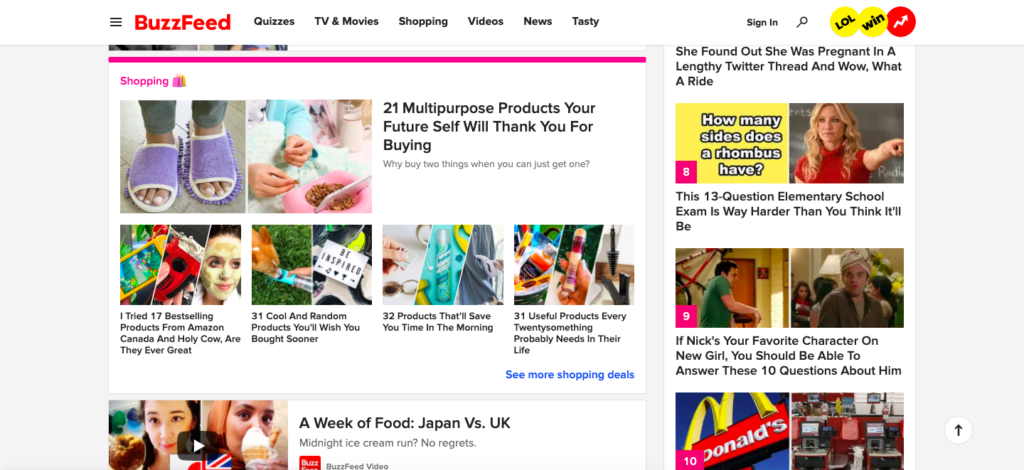
Take a look at the article below from Close. You could not possibly tell me you would not want to read that over a dull article that explains what cold emails are in big chunky paragraphs.
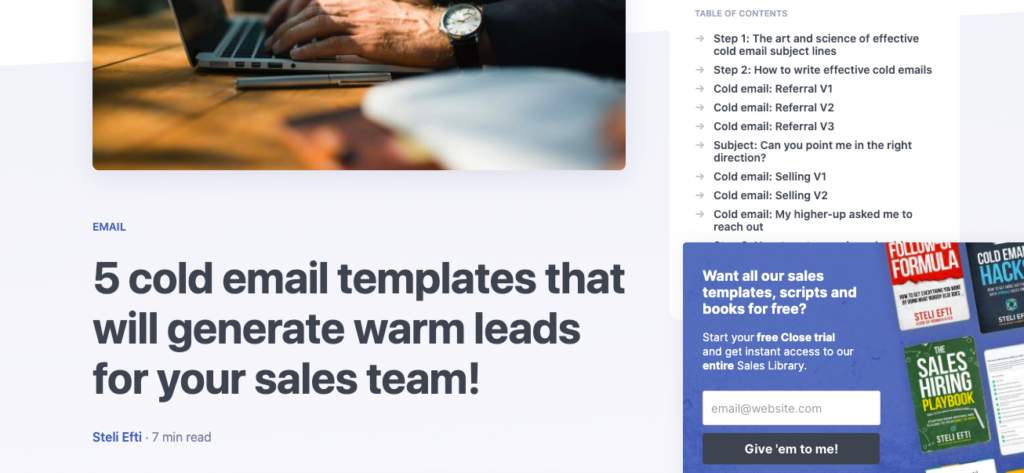
Speaking of listicles, odd numbers always tend to do better than even numbers. So, when you are creating your content try to focus on an odd number like nine or seven.
If you scroll back up to the Buzzfeed screenshot, you will notice that most of their listicles use odd numbers over even numbers. They simply perform better.
Another quick tip to keep in mind- according to a study, 29 consistently does better than other odd numbers.
Try to make your headline specific
So, for this tip let us take my article as an example. The title of my article is ‘10 Copywriting Tips and Tricks for Small Businesses: Ridiculously Easy Ways to Keep Eyes Glued to Your Website’.
Now keep in mind that if you google, ‘copywriting tips’ about a million results will pop up. You need to differentiate yourself. In this case, I have done that by writing an article titled ‘copywriting tips for small businesses’. I am focusing on one audience in specific.
You could do this by creating content for a certain demographic in specific. This can be anything-
- For Moms
- For Beginners
- For Business Owners
Another way to be specific is to give your readers a time frame within which they can finish doing something. So, let us take an example from One Cent At A Time- How to Start a Self Hosted Blog in 20 Minutes and $20.
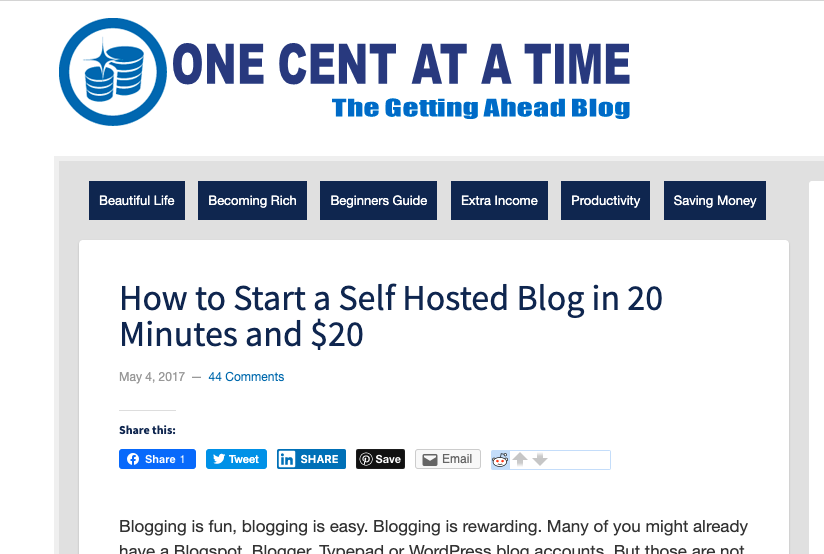
The specific amount of time you can finish the task in is in itself a compelling reason to read the article. Any specifics you can give your readers will always do well.
Try using easy words in your content
You will often see headlines that use big words simply for the sake of using them. Instead of trying to show people how intelligent you are, always focus on simplifying things.
Here is an example:
Do not say: 11 Stupefying Ways You Can Obliterate Blackheads
Instead say: 12 Awesome Ways You Can Get Rid OF Blackheads
Using big words is the headline version of being the annoying kid who always has their hand up in class. People want simple and like simple- give your audience what they want.
Use the word ‘You’ in the headline
Speaking to the reader is always a good step to incorporate within your content so why not start with the headline?
Using the word ‘You’ in your headline is a great way to reel the reader in and show them that this is the content they should be reading.
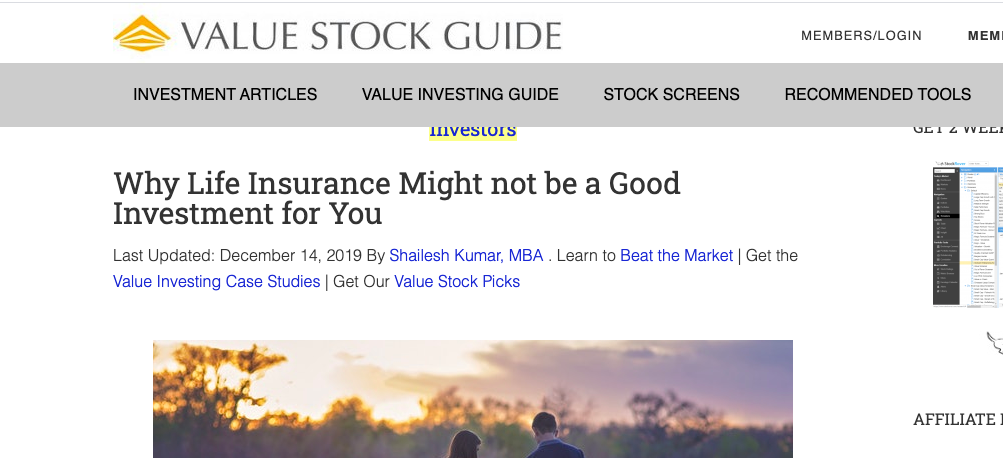
This is what Value Stock Guide has done in their post about life insurance. Readers are more likely to read an article that is aimed towards them.
Incorporating a few or all of these tips when deciding on what your headline should be is a great way to kick your content off. You could also use a free tool like the Headline Analyzer from CoSchedule to get your headline ranked and get a few more tips to make it better.
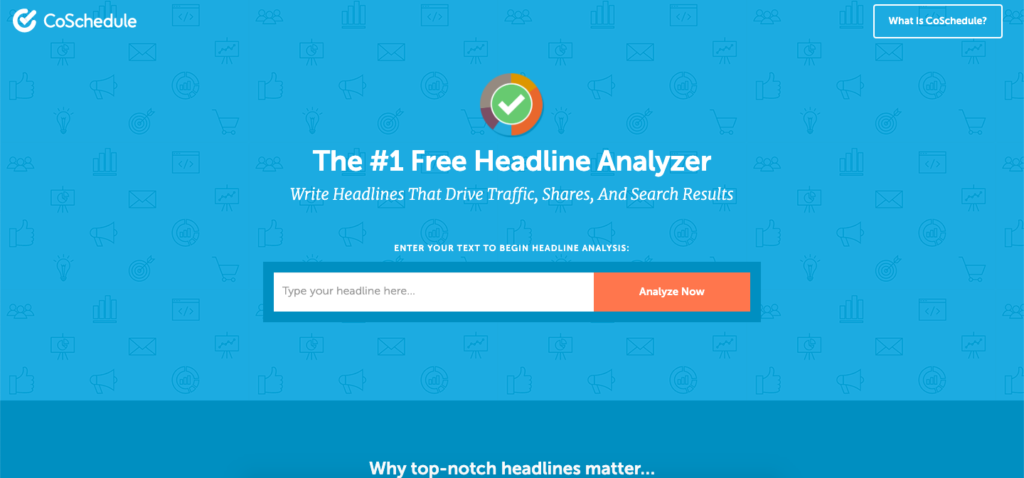
#2 Keep things concise
It is awesome to have a conversational tone in your writing but there is no need to rant. ‘Going off topic’ syndrome is a terrible disease to have as a writer. Keeping things concise and delivering your point in easy, bite-sized sentences is all your readers want from you.
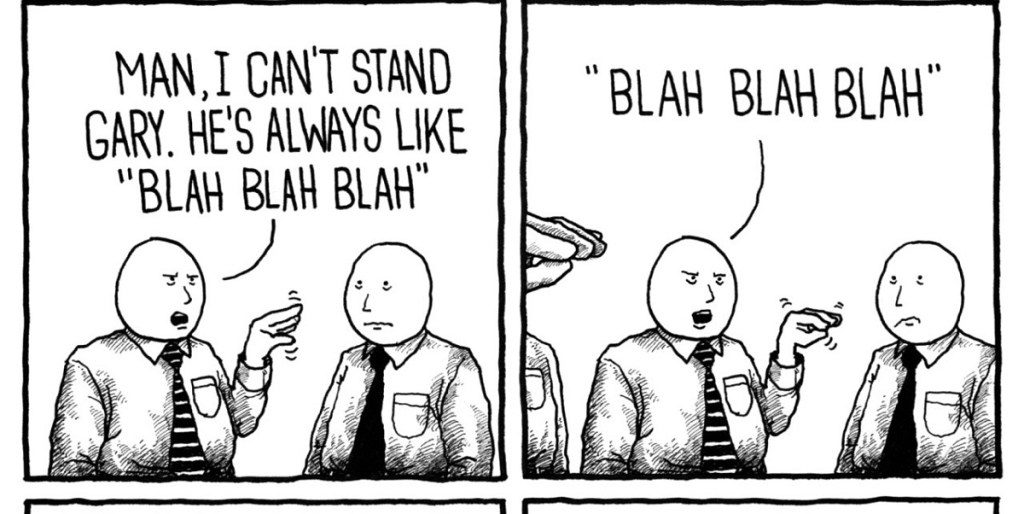
Keep in mind that they have a long day ahead and plenty to get to. Do not tease them for five paragraphs before you get to the point because they will only wind up leaving your site if you do that.
#3 Always Include a Statistic in Your First Paragraph
It is always a good practice to include a statistic in the first paragraph of your content. If you scroll up and look at the intro of this article, you will notice I not only added a few statistics but I also added a visually pleasing image.
It is an easy way to validate what you are saying and help your readers understand the importance of the topic you are tackling.
Alongside statistics, tapping into your readers’ emotions can strengthen your message. Introducing emotional triggers in your opening paragraph can make your writing more persuasive and relatable. By addressing common pain points, aspirations, or desires directly, you connect with your audience on a personal level. For example, words that evoke excitement, urgency, or nostalgia can prompt readers to take action much more effectively than dry statistics alone. Psychology studies, such as those published by the APA, show that emotion-driven content is more likely to be shared, thereby increasing its reach and impact.
#4 Your Opt-In Form Should Be Easy to Fill
Another great perk of having awesome content on your website is you get to build an email list and focus your efforts on email marketing.
You can do this by including opt-in forms at the right places throughout your content. It is pretty simple- you use an email marketing service like ConvertKit to create the opt-in forms and then use a freebie to convince readers to subscribe to your email list.
You can even use a service like Hello Bar to place a bar on the top of all of your posts that will help collect the reader’s emails.
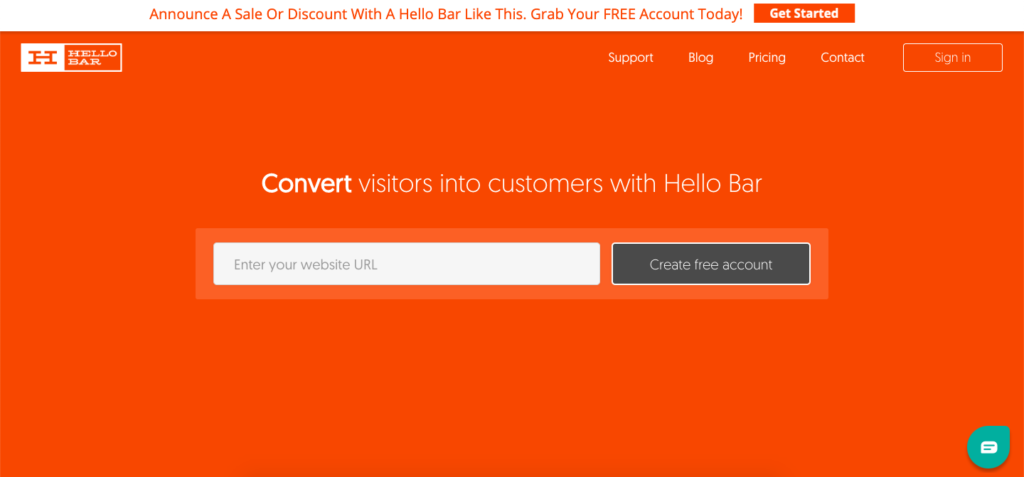
It is a noninvasive email collecting technique that has a great conversion rate.
The important thing to keep in mind with any opt-in form though is to be as quick as possible. Do not make the mistake of asking for a million details or creating an extremely long form.
Ideally, you should only ask readers for the name and email address. Anything more than that and the reader thinks that it is not worth their effort.
A good example of this is what Brian from Backlinko does to convince people to sign up for his newsletter. The simple opt-in form that he includes with every post is visually appealing and easy to fill. The only thing the reader has to do is enter their email and that is pretty much it.
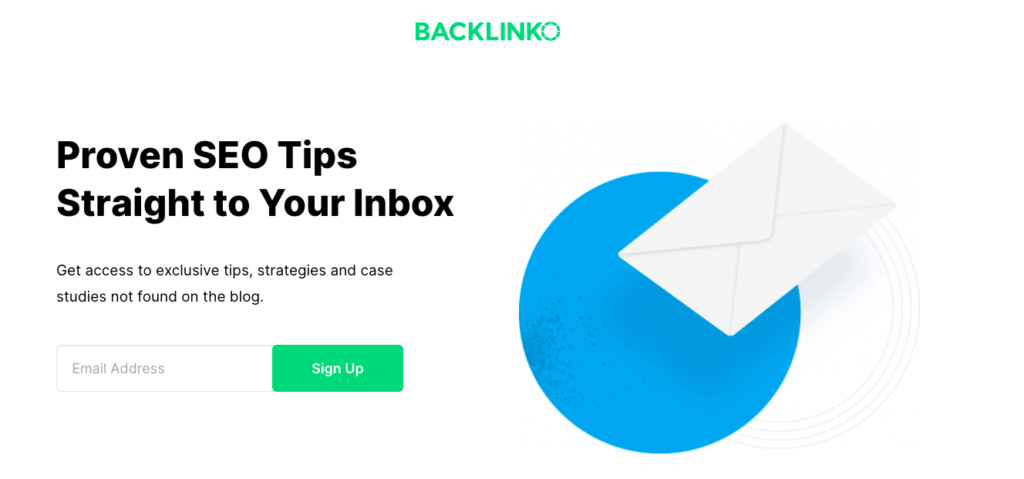
If you manage to nail down your opt-in forms, you can cultivate your important contacts through email. This can be a godsend for many small businesses that want to nurture their leads and build a relationship with their audience.
#5 Longer Blog Posts Convert
According to HubSpot, the ideal post required to generate leads is 2,500 words long. It has always been well-known that longer posts convert and they convert well.
Brian from Backlinko created a graph that agrees with this statement as well.
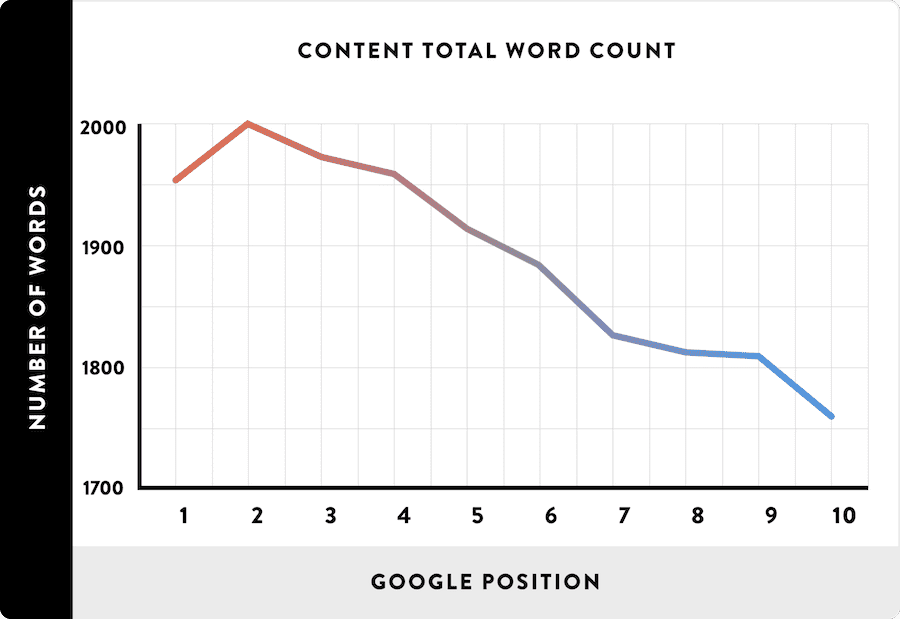
You can also include other important elements into your content when it is longer such as SEO, opt-in forms, visuals, and more. A 400-word blog post simply does not do the trick anymore.
You need to treat every post you create like a Wikipedia page- make it as thorough as possible.
Importance of SEO in Copywriting
Search engine optimization (SEO) is an integral part of creating content that not only attracts readers but also gains visibility on search engines. By strategically incorporating relevant keywords into your copy, you’re more likely to rank higher on search engines like Google. This means more potential customers will find your business organically. Make sure to include keywords naturally throughout your headings, subheadings, and body content. Tools like Google Keyword Planner can help you discover the most effective keywords for your niche. Furthermore, optimizing your meta descriptions and image alt texts enhances your content’s visibility, drawing more attention to your site.
#6 Always Plan Ahead- Create an Outline
Sitting down and just smashing away at your keyboard is not the best way to create a blog post because this can result in you missing out on potentially important details.
Not only that but you will also probably take longer since you will have to continuously stop writing to research the next step. This will mess with your flow and keep you distracted and frustrated.
A better way to do things is to create an outline you can follow before actually sitting down to write your article. Creating a content outline will prevent you from falling down rabbit holes and will also improve your relationship with freelancers.
A freelance writer would really appreciate an outline being created for their content and that way you can also make sure that they cover everything you would like to be included in your post.
Elise Dopson has an awesome outline template you can get your hands on when you subscribe to her email list.
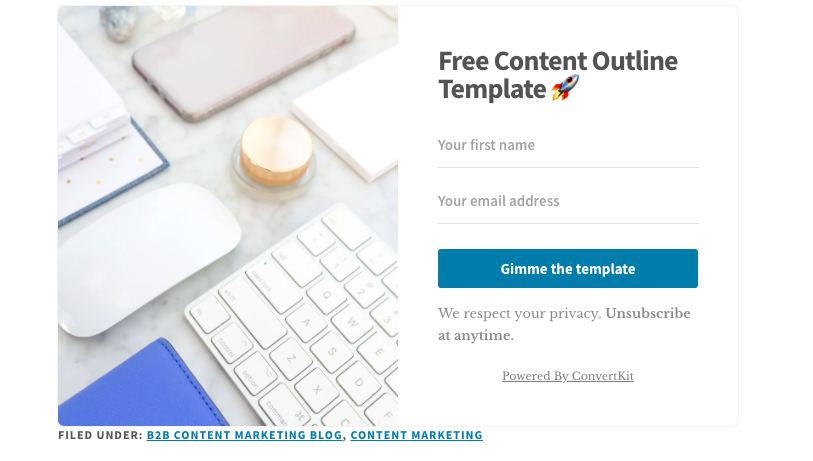
This is a good way to plan your keywords, headings, meta descriptions, length, and structure in advance. It can also help you create an awesome table of contents that you can feature on a panel to the side of your actual content. That way readers can quickly scroll to the points they want to focus on.
A good example is what Preply did with their How to message a recruiter on LinkedIn article.
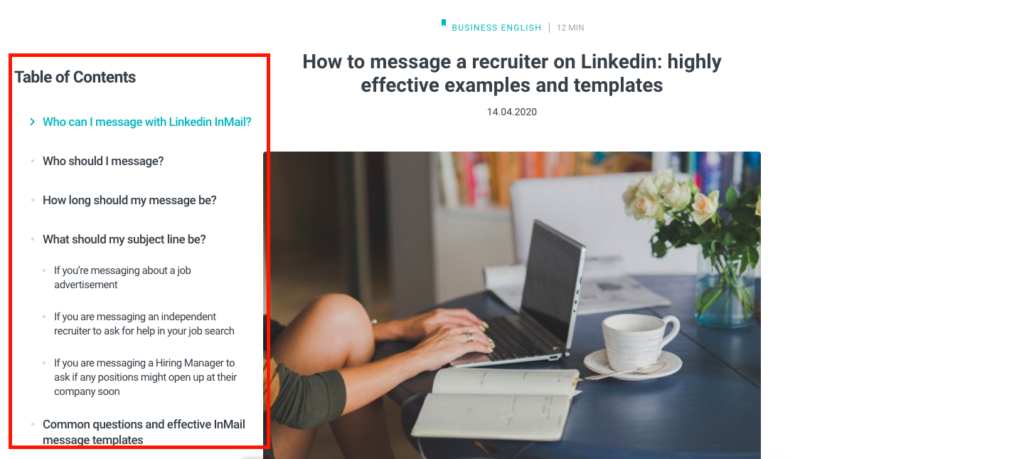
Overall, it will save you time in the long run and make your writing process much easier.
The Role of A/B Testing
Experimenting with different approaches through A/B testing can significantly boost your copy’s effectiveness. By creating two versions of a headline or a call to action (CTA) and testing them against each other, you can see which one performs better. Simple tools like Google Optimize or Optimizely enable you to conduct these tests, helping refine your content based on data-driven insights. This process not only improves your engagement rates but also increases conversion, offering a tangible return on investment (ROI). It’s a straightforward way to understand what resonates most with your audience.
#7 Help your readers get in touch with your business
A good practise is to always add a few links at the end of your article that go towards your social media accounts and contact page. This way interested readers will find it much easier to get in touch with your business.
Pete from doyouevenblog does an awesome job of this by adding a few quick lines below every post.
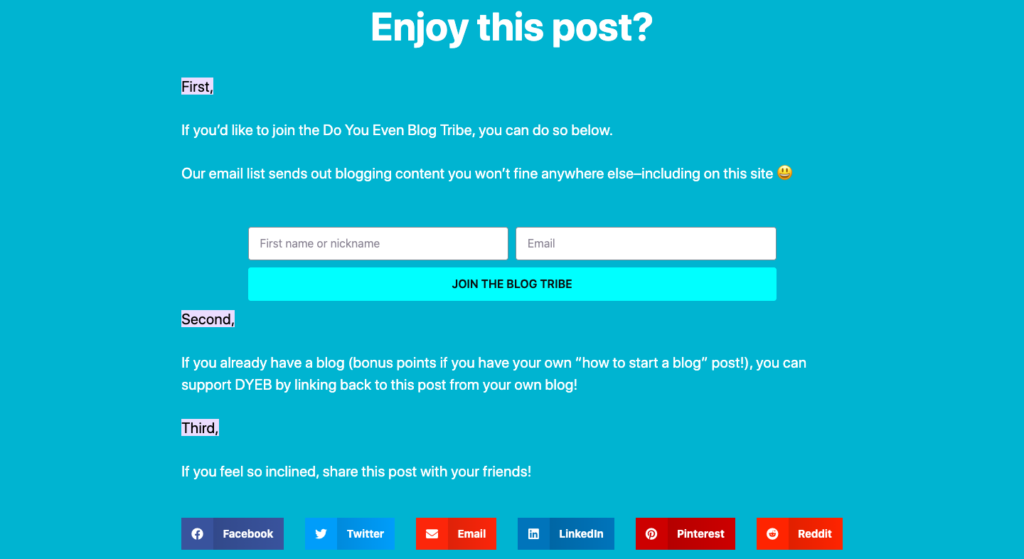
While encouraging visitors to contact your business, integrating elements of social proof in your content can increase their trust and likelihood of engagement. Social proof—such as testimonials, reviews, or case studies—demonstrates that others have benefited from your products or services, building credibility. According to BrightLocal, nearly 87% of consumers read online reviews for local businesses, with positive reviews making them 31% more likely to engage. By embedding these elements into your content, you not only foster trust but also encourage reader interaction, paving the way for potential conversions.
It is a simple yet effective way of getting people to reach out to you and invest in your brand further.
#8 Create a Digital Swipe File

If you repeatedly see yourself using certain images or referring to certain posts, it would be a good idea to create a digital swipe file full of that content that you tend to take a look at multiple times.
This could be absolutely anything. It could be a tool you use to find keywords with or a certain list of statistics. It could even be screenshots of a website you found interesting.
These bits of information will serve as inspiration when the time is right. You can store all of this content on Google Drive, Trello, or even a folder on your desktop.
This is an awesome post on swipe files and the importance of creating one if you want to learn more.
User Experience (UX) and Copywriting
Writing effectively isn’t just about the words you use—it’s also about how they interact with your website’s design. User experience (UX) focuses on providing a seamless and enjoyable journey for your visitors. This means ensuring your copy is easy to read, well-organized, and enhances the overall design. Short paragraphs, subheadings, and bullet points can help make your content more digestible. Moreover, ensuring that your website is mobile-friendly is paramount, as a significant chunk of web traffic now comes from mobile users. A good UX turns visitors into returning customers by making their interaction with your content as smooth as possible.
#9 Get a Little Goofy
A common mistake people tend to make with their content is they deal with it like they are submitting an essay to Harvard. The way we were taught to write in school is not the way you need to write your blog post content.
Adding a funny gif, a visual infographic, or creating a relevant meme is not a bad thing. You could even use drawing software to take it up a notch and create a cool animation.
Infact most readers are likely to stay interested in your content if you throw in a bit of humor.
Clickup does this with almost all of their blog posts. They add a relevant, funny gif in the intro paragraph to reel their audience in.
Here is an example of what they do for most posts:
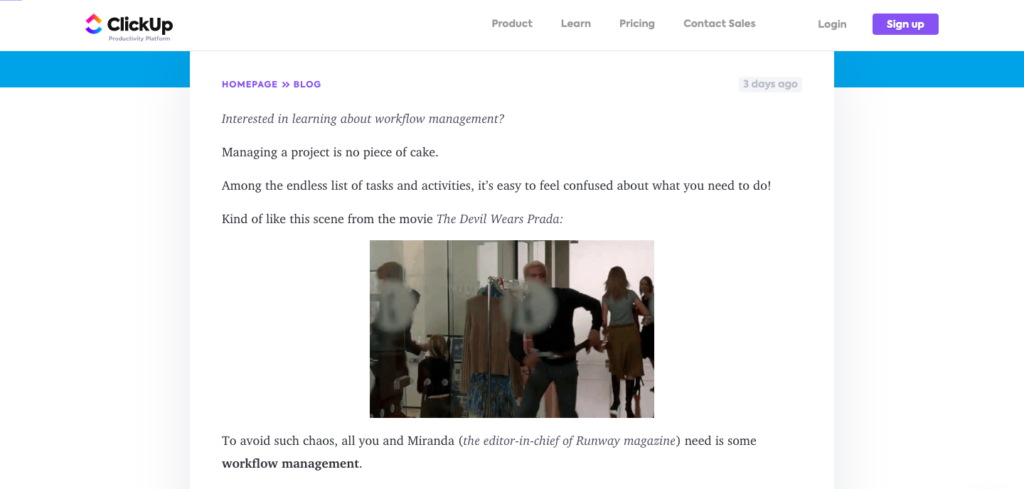
It is relatable and funny and your audience will love you for it.
#BONUS
If you’re asking yourself: “Are there any proficient writers who can do my homework for me?” Sure, there are! Companies like Studyfy consist of skilled experts who’ll save your time by doing your assignment. No matter what subject you are struggling with.
Conclusion
60% of marketers create at least one piece of content each day. Companies that do not do this and put their content on the backburner instead tend to sacrifice sales and revenue in return. If you really want your business to succeed, having good content that Google and your audience loves is the first step.
Creating great copy for your small business website means more leads and a more engaged audience. Keeping a few simple tips in mind when you create this content can double the effectiveness of it.
About the Author: Burkhard Berger is the founder of awesomex™. You can follow him on his path from 0 to 100,000 monthly visitors on www.awesomex.com. His articles include some of the best growth hacking strategies and digital scaling tactics that he has learned from his own successes and failures.
Feel free to follow him on Instagram, Facebook, and Twitter.

Last Updated on February 12, 2025 by Ian Naylor
3 thoughts on “9 Copywriting Tips and Tricks for Small Businesses: Ridiculously Easy Ways to Keep Eyes Glued to Your Website”